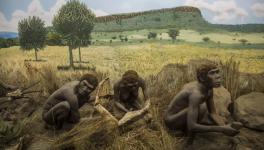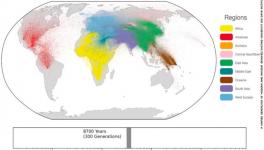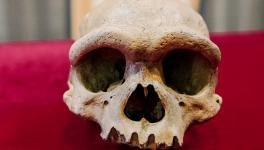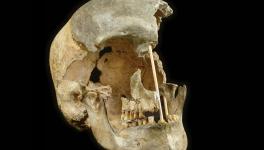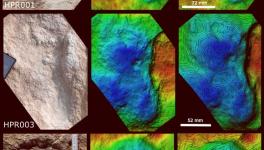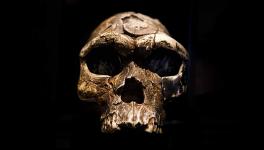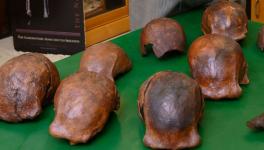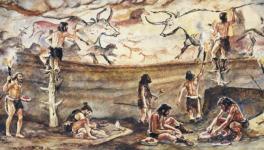New Study Reveals Only 7% Genome is Unique in Modern Humans
Some 520 to 630 thousand years ago, genetic split up took place between populations that would eventually become modern humans and the Neanderthals. The genetic variation present in the common ancestral population (which split into Neanderthals and modern humans) is still present among ourselves in large portions as it did with the Neanderthals until they got extinct 40,000 years ago.
Since that ancient period, modern humans have continued to evolve with changes occurring in their DNA. But the question is how unique are we? One way of looking at it is through the analysis of the genomes of modern humans and other archaic human species. Genome roughly signifies all of the genes present in a species.
One latest study, published in Science Advances has adopted such a comparative genomic research. The research suggests that only 1.5 to 7% of the genome of modern humans is unique.
Nathan Schaefer at the University of California, San Francisco and his colleagues developed a new method called the Speedy Ancestral Recombination Graph Estimator (SARGE) that has allowed them to estimate the ancestry.
Specially, it helped them identifying the portions of the modern human genome that are not shared with other hominins. This means these portions of the modern human genome were not present among the ancestors that the modern humans shared with Neanderthals and the Denisovans (another ancient human species). Also, these portions of the genome of modern humans that are unique to it, were also not introduced to the human gene pool in the process of interbreeding with Neanderthals or Denisovans.
Commenting on the findings and the new method they developed, Nathan Schaefer said in a statement, “Instead of building a tree across the genome that shows how a bunch of genomes are related on average genome-wide, we wanted to know what the ancestry of individuals looks like at specific sites in the genome. We basically wanted to be able to show how everyone is related at every single variable position in the genome.”
The team of researchers analysed one Denisovan, two Neanderthal and 279 modern human genomes in the attempt to decipher what parts of the genome separate the modern humans from the ancient hominin species. Their analysis revealed that it is only 1.5%-7% of the modern human genome that is unique to us.
The figure seems to be quite low in defining the uniqueness, but it is to remembered that we had inherited plenty of DNA from our ancient ancestral species from which the Neanderthals, Denisovans and the modern humans emerged.
More so, modern humans also interbred with Neanderthals and Denisovans and in the process picking up more DNAs from the species. These inherited DNAs are thus not unique to modern humans.
“It’s true that individual humans have a very low per cent of their genome that might have been from Neanderthal or Denisovan ancestry – non-Africans can have between 1.5 to 2.1% of their genome that originated from Neanderthal ancestry,” Commented Schaefer.
It is well known that modern humans have 2% of DNA in its genome inherited from the Neanderthals. However, the exact form of the Neanderthal DNA varies from individual to individual. This means that two persons can both have 2% of Neanderthal DNA, however, they share little Neanderthal DNA in common. This indicates that different individuals have different bits or portions of the Neanderthal DNAs. In a large population size, these differences in the inherited Neanderthal DNAs in modern humans add up. In fact, it has been estimated that about 40% of the Neanderthal genome can be stitched together by combining the genetic information collected from a wide variety of people.
The uniquely human features were contributed by mutations containing in the small part of the genome and they mainly affect genes linked to the development of the brain. It would be possible to understand the cognitive differences that modern humans have with ancient species like Neanderthals by further studying those mutations in the genes related to brain.
Get the latest reports & analysis with people's perspective on Protests, movements & deep analytical videos, discussions of the current affairs in your Telegram app. Subscribe to NewsClick's Telegram channel & get Real-Time updates on stories, as they get published on our website.










